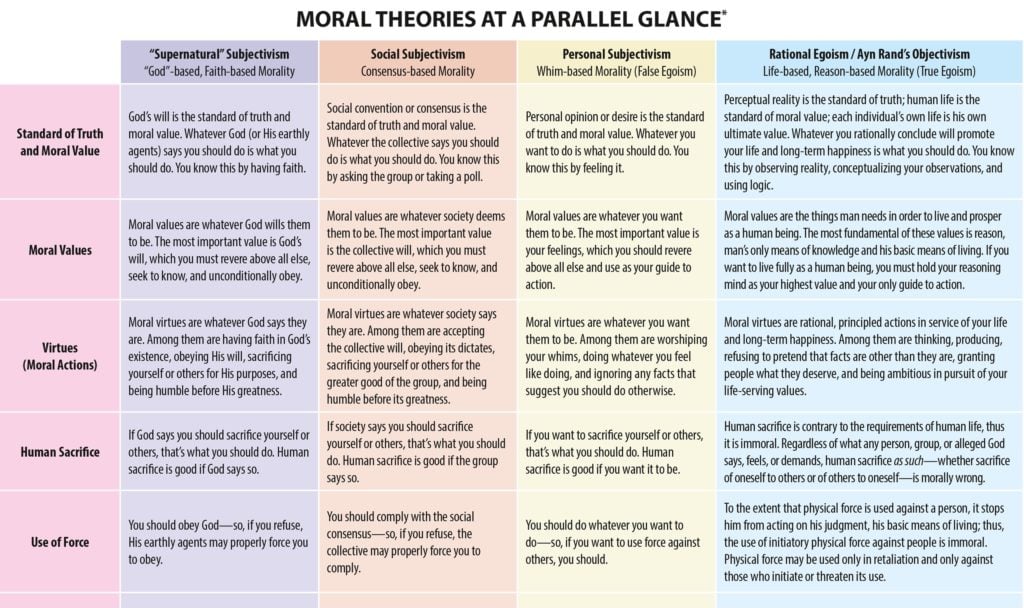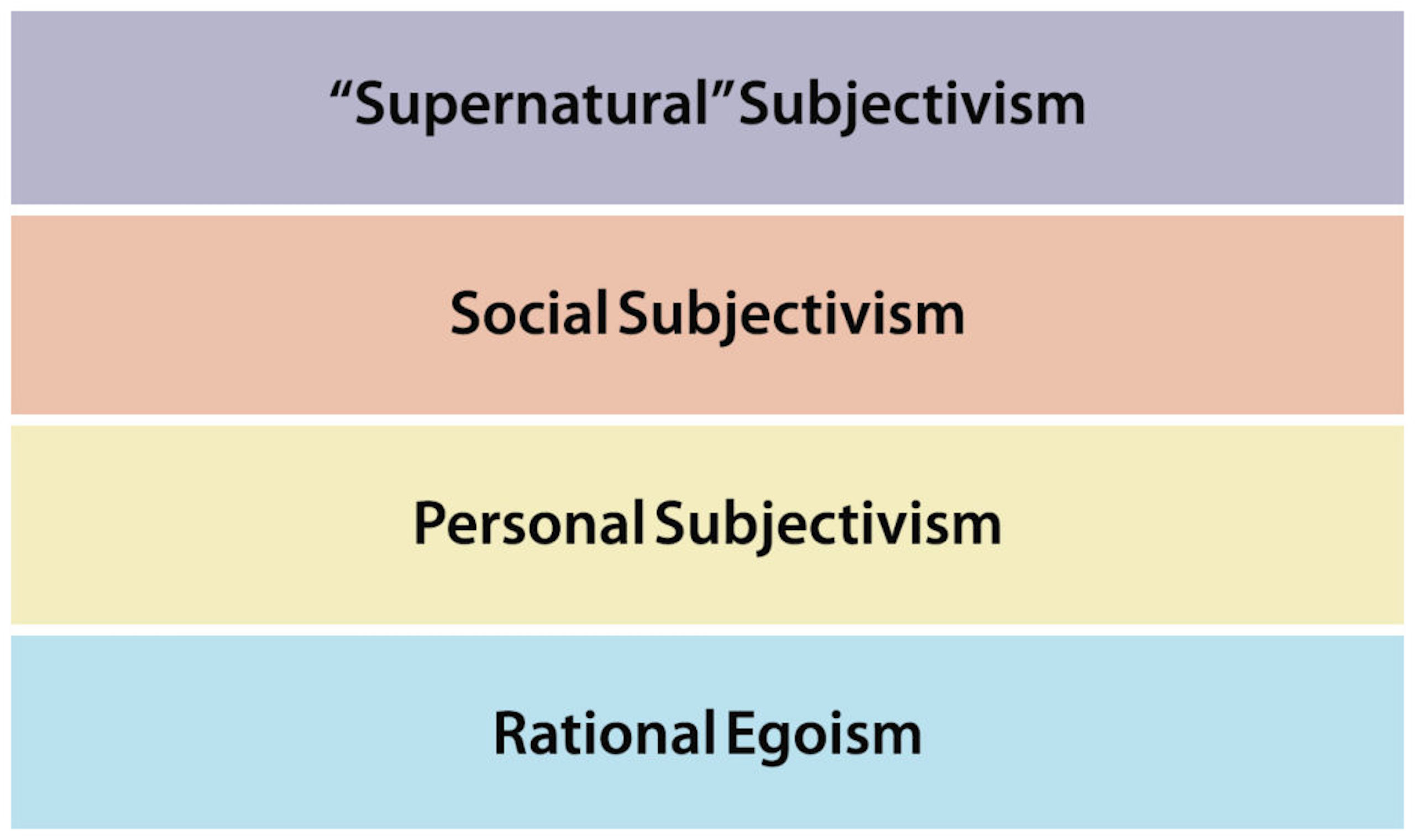 [Click for a PDF of the full chart]
[Click for a PDF of the full chart]
Human action, whether by individuals, groups, or governments, is driven by ideas—most substantially by the ideas people accept as morally correct.
- Why did Rosa Parks refuse to give up her bus seat to a white passenger?
- Why did Edward Snowden release classified NSA documents to the media?
- Why did Muslims hijack passenger jets and fly them into buildings full of Americans?
- Why did Congress pass ObamaCare into law?
The broad answer to such questions is that the individuals, groups, or governments did what they did because they regarded the actions as morally right.
People act (for the most part) on their moral convictions, whether explicit or implicit, pure or mixed; thus, if we want to understand why individuals, groups, and governments do what they do, we need to understand the key elements of the moral codes that motivate them. Toward that end, I’ve created a chart titled “Moral Theories at a Parallel Glance.”
The chart presents key aspects of four general moral codes at play in the world today: “supernatural” subjectivism (“God”-based, faith-based morality), social subjectivism (consensus-based morality), personal subjectivism (whim-based morality), and rational egoism (life-based, reason-based morality).
The purpose of the chart is not to present the arguments for and against these theories (that would require a book); rather, the purpose is to place the key principles of each theory in parallel on a single page, so that they can be easily compared and contrasted. The principles included for each are:
- the standard of truth and moral value (e.g., God’s will),
- the fundamental moral values (things people should revere, uphold, or pursue),
- the fundamental virtues (actions people should take),
- the code’s position on human sacrifice,
- its position on the use of physical force against people,
- its position on rights, and
- its implied social system.
Such a highly delimited chart is obviously no substitute for a deep and broad understanding of these issues. But it can be helpful in making sense of the actions taken by individuals, groups, and governments. And, of course, whereas the principles of these theories are here presented in pure, unmixed form, it is not only possible but also quite common for people to embrace a mixture of these ideas. This fact, however, simply highlights the value of isolating the theories by reference to their essentials, as one cannot understand mixed ideas unless one first understands the elements of the mixture.
I hope you find the chart useful. If you do, consider sharing it with your friends. The conversations it could inspire are precisely the kinds of conversations people need to engage in if we are to achieve a culture of reason and freedom.
Related:
- Ayn Rand: America’s Comeback Philosopher
- Ayn Rand's Theory of Rights: The Moral Foundation of a Free Society
Image: Wikimedia Commons














